Health Minister Beroš: "By This Morning 36,013 People Registered to be Vaccinated"
ZAGREB, 3 March 2021 - By this morning 36,013 people have registered online to be vaccinated, which indicates that citizens have recognised that vaccination is an unavoidable step in the fight against the coronavirus epidemic, Health Minister Vili Beroš said on Wednesday.
More than 50% of those who registered for vaccination were from Zagreb, followed by Split-Dalmatia and Primorje-Gorski Kotar counties. There were also 948 phone calls by people interested in getting vaccinated, Beroš told a regular press conference by the national COVID response team.
The head of the Croatian Institute of Public Health (HZJZ) Krunoslav Capak underscored that in the first three days of this week there were 11.7% more new cases of coronavirus compared to the same period last week.
The share of positive cases among those tested is 10.2% while in the past seven days that was 7.9% and in the past 14 days that share was 7.2%.
Croatia ranks 3rd in the European Union with regard to the incidence rate, with Germany and Denmark recording lower incidence rates while the Czech Republic has the highest rate.
The HALMED medicines agency has received 1,186 reports of side effects - 891 to the Pfizer vaccine, 222 to AstraZeneca and 71 to the Moderna vaccine.
Asked why fairs are not allowed, Capak said that that was being considered and added that it was not the same to have a farmers' market fair in downtown Zagreb and the usual village fairs where pigs are roasted on the spit and the festivities continue until late into the night.
The head of the response team, Interior Minister Davor Božinović, said that measures were being relaxed gradually. He added that the measure to limit the number of people at funerals to 25 had brought about results.
There are some deviations and we are trying to respond to that in situations of funerals or some other organised event. Anyone organising such an event needs to do everything they can to keep it under control, said Božinović.
He added that as far as spontaneous gatherings like those in Zagreb are concerned, he recalled that a decision was adopted yesterday which is not repressive but rather preventative and that messages are being sent that large gatherings are not a good idea.
Croatian Health Officials: "There Won't Be Drug Shortages"
ZAGREB, 3 March 2021- The State Secretary at the Health Ministry, Željko Plazonić, said in the parliament on Wednesday that there would be no drug shortages and that citizens would be able to obtain the necessary drugs.
Plazonić made the statement in response to a statement by MP Davor Nađi of the Fokus party, who, during a debate on changes to the Health Insurance Act, warned about the debts to drug wholesalers and uncertain supply.
Of all EU countries Croatia has the largest number of particularly expensive drugs for the treatment of malignant diseases whose cost is covered by mandatory health insurance, Plazonić said.
Health protection for digital nomads?
As for amendments to the Health Protection Act, which will ensure the right to health protection for digital nomads with temporary residence in Croatia, some opposition parties wondered if this would contribute to an increase in the health system's debts given that digital nomads would have access to cheap medical services under unclear criteria.
"Thousands of citizens have to wait for specialist examinations and we are now providing cheap insurance and medical services to foreigners who say that they are digital nomads," said Hrvoje Zekanović of the Croatian Sovereignists.
Marija Selak Raspudić of the Bridge party said that Croatia was copying Estonia, one of the pioneers of citizens' electronic status, without having a clear plan on how to regulate the status of digital nomads.
"How comprehensive is that approach, how much will digital nomads profit from it and how much will Croatia's economy profit?" she asked.
Croatia's Food 2nd Most Expensive in EU by Wage: Health Implications?
January 13, 2021 – Only in Romania are they so poor that they spend more of their income on food than here. In a country famous for its premium produce, what is the price on the health when Croatia's food is so incredibly expensive?
Croatia's food is the second most expensive in Europe when judged next to average household income. Only in Romania do people spend a larger percentage of their monthly wage on food and non-alcoholic drinks. In the EU, the average household spends on food takes up 7% of their earnings. In Croatia, it is almost double that amount – 13%. That the average monthly wage in Croatia is a third lower than the EU average accounts for some of this disparity. Though the other reason is simply that Croatia's food is really, really expensive.
“I couldn't believe it when I saw the prices of food after I got to England,” Split-based nutritionist Iva Tokić tells TCN. Having studied for her Bachelor's degree in nutrition at the University in Split, she transferred to Oxford Brookes University in England where she earned her Master's degree in the subject. “I expected food to be much more expensive, because life, in general, is so much more expensive in the UK than it is here. I was pleasantly surprised to see that the prices of the UK's food are almost exactly the same as Croatia's food, except that in England some things like avocado, salmon (losos) and smoked salmon is so much cheaper than it is in Croatia. Insane!” Iva Tokić, who has her own independent practice as a nutritionist and works as a nutritional educator and consultant for other polyclinics and sports professionals back in her hometown of Split. She has a Master's degree in nutrition
Iva Tokić, who has her own independent practice as a nutritionist and works as a nutritional educator and consultant for other polyclinics and sports professionals back in her hometown of Split. She has a Master's degree in nutrition
Food shopping in the UK is a very different experience to that in Croatia. You would struggle to understand fully just how different it is unless you'd actually done both. There simply isn't enough farmland in the UK to feed all of its inhabitants. Most food is imported. Where in Croatia, you can still experience the authentic experience of eating a varied diet based on the seasons, in the UK that simply doesn't exist. Everything is in season somewhere in the world. And that's where they'll take it from. Everything is available. All of the time.
What the UK loses in this set-up - seasonal eating and the varied diet this creates – it makes up for with the offer available and price. Food and flavours from all over the world can be bought in any of the competing supermarkets. International cuisine is incredibly popular. And, just as the supermarkets compete to lower prices, so do producers – it isn't only salmon and avocado that is cheaper in the UK.
The lamb produced in the lush, green hills of Wales or on the moors of northern England and southern Scotland is comparable in extremely high quality to the very best you could buy from Pag or anywhere else in Croatia. Except in the UK, the animals' diets are unrestricted – the lambs grow much bigger. Though much of this premium product is exported (British lamb is a highly prized delicacy across much of western Europe, particularly France), a lot of it is still sold in the UK. Its price is kept down by huge amounts of imported New Zealand lamb which competes against the domestic lamb in price. In Croatia, lamb is an expensive treat – in the UK, it's an everyday meat. And it is much cheaper than it is in Croatia. Although the lamb meat produced in the UK is of comparable quality to that produced in Croatia, the meats form a very different part of the diet in the two countries. In Croatia, lamb is an expensive treat. In the UK, lamb is much cheaper and viewed as an everyday meal
Although the lamb meat produced in the UK is of comparable quality to that produced in Croatia, the meats form a very different part of the diet in the two countries. In Croatia, lamb is an expensive treat. In the UK, lamb is much cheaper and viewed as an everyday meal
Within this one example we can sharply see the disparity between the premium food produced in Croatia and the general diet of the everyday citizen. Croatia is now known well for its cuisine and produce. TCN was pleased to report over recent weeks the success of food and agricultural exports from Croatia. However, the finest prsut, olive oil, seabass (brancin), bream (orada) and red wine for which Croatia is famous do not make up standard everyday Croatian meal. These luxuries are often exported. Pasteta (meat paste) on bread and cheap wine made palatable with cola are more likely to be the elements of Croatia's food found in any student kitchen in the country.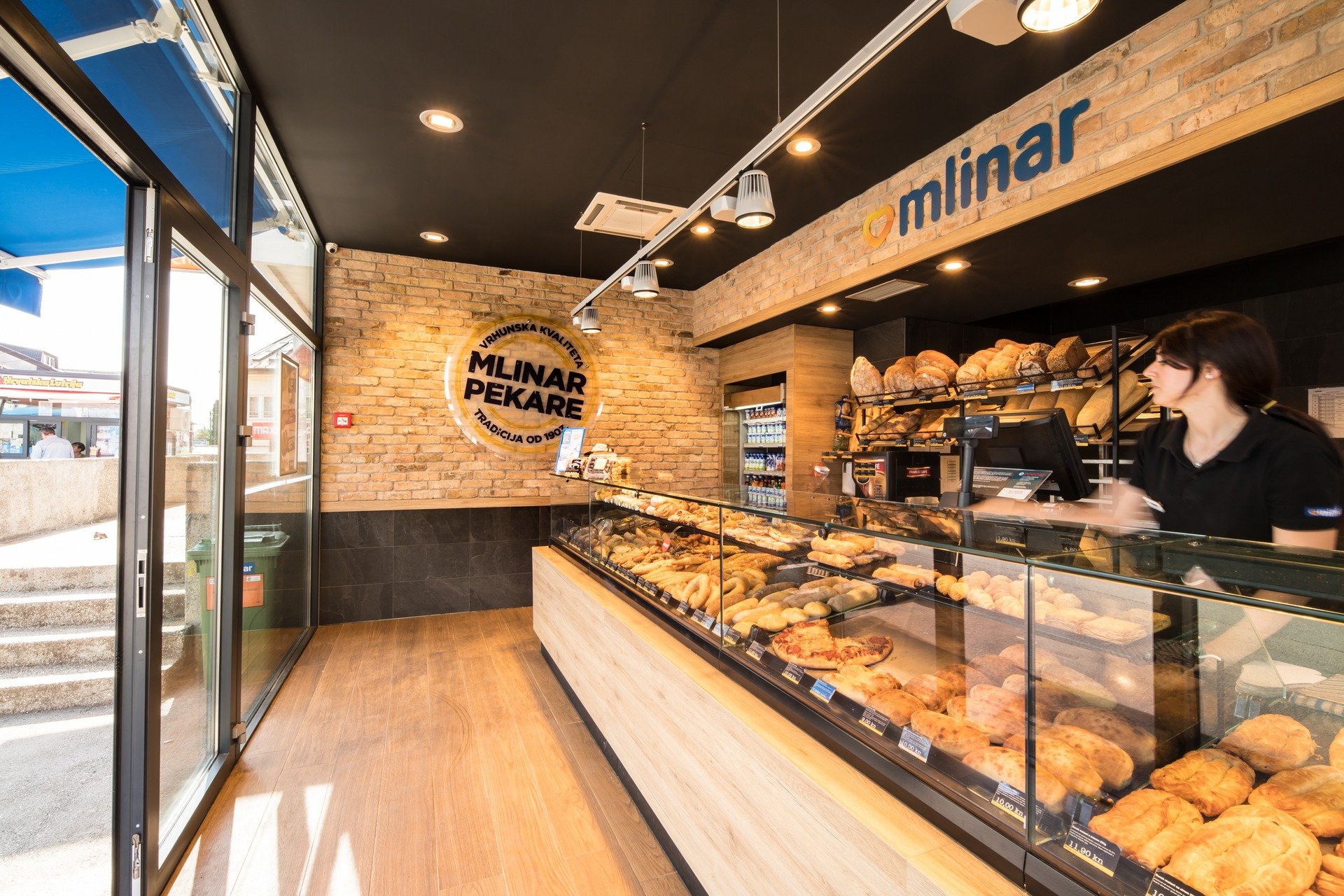 The pekara (bakery) is a fast, inexpensive and very popular choice for both breakfast and lunch in Croatia, but is it the healthiest thing to eat every day? © Mlinar
The pekara (bakery) is a fast, inexpensive and very popular choice for both breakfast and lunch in Croatia, but is it the healthiest thing to eat every day? © Mlinar
“We really don't eat enough fish. It's so disappointing because we live right next to the sea!” says Iva, who now works in her own independent practice, and as a nutritional educator and consultant back in her hometown of Split. “But, we don't eat enough of it because it's way too expensive for a lot of us to eat regularly. We also don't eat enough vegetables and fruit. We eat meat. We eat a lot of meat. We eat a lot of pekara (bakery) too. It's often the cheapest and the most convenient. If you want to save money and grab something fast, get breakfast in pekara. Students and older people in particular, they all eat in pekara. That's not good because that food is high in trans fatty acids and saturated fats. Saturated fats are a problem because it's a big cause of cardiovascular disease. Too much meat and pekara, not enough fish, fruit and vegetables – those are definitely the biggest problems with the Croatian diet.”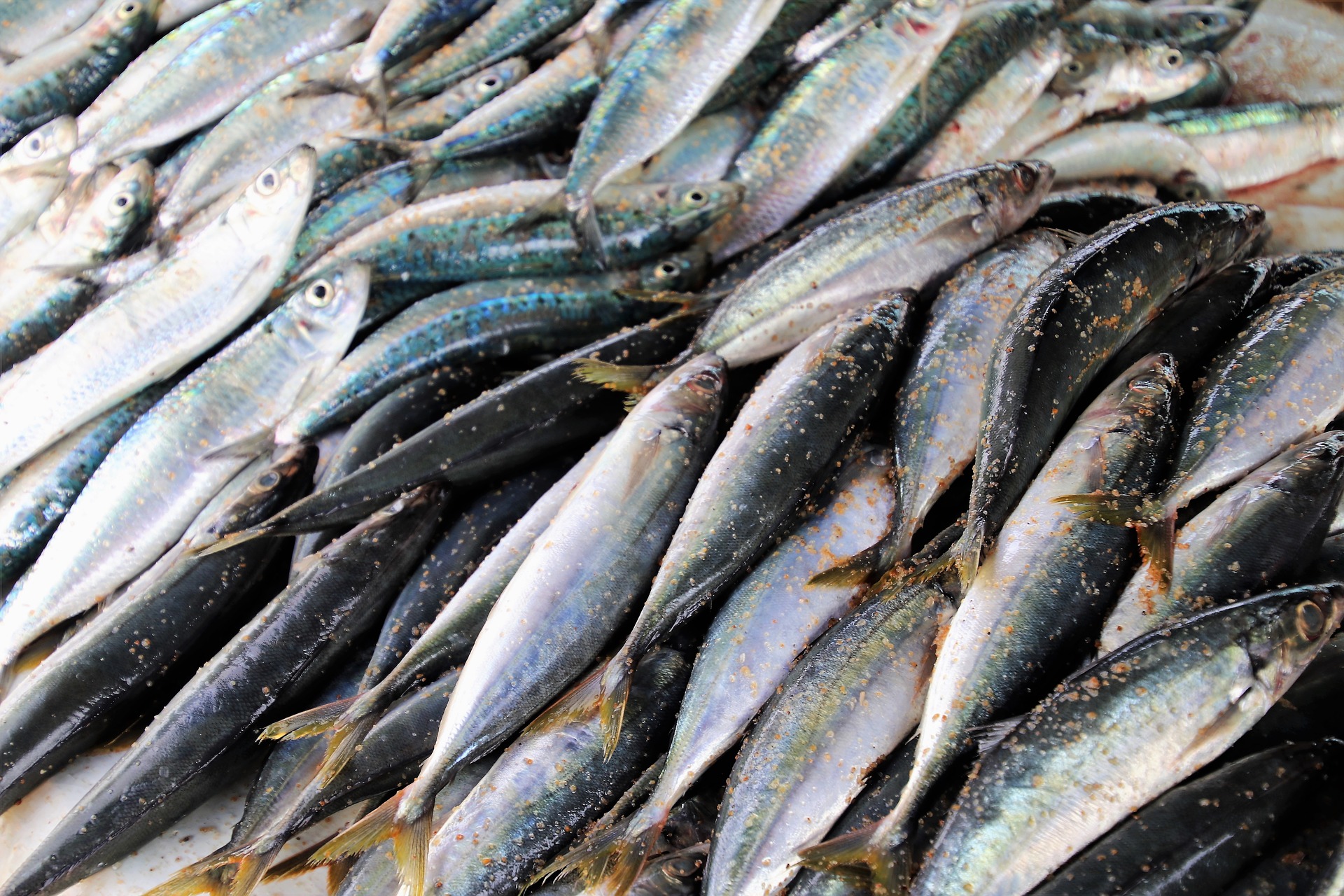 "Per capita consumption of fish and seafood in Croatia is estimated at 8 kg. Total consumption of fish and fish products per capita is significantly lower than in other Mediterranean countries. Fish is consumed mostly at home, traditionally once a week (on Friday) and during some holidays. The consumption of fish is higher in coastal areas than inland. Most fish is sold at traditional fish markets where the availability and freshness of fish products is considered very good. Only 3% of Croatia’s population eat fish every day, with the average person spending just 840 kuna (110 euros) a year on fish. In Croatia the most popular fish eaten are the cheaper varieties such as sardines and anchovies, followed by hake, mackerel and bonito. Croatia exports a big part of its quality fresh fish from the Adriatic, such as scampi and red mullet, whilst restaurants along the coast will often serve farmed fish or cheaper imported varieties." December 2016 Flanders investment and trade market survey of the Croatian Fishing sector, undertaken by the Trade Office of the Embassy of Belgium
"Per capita consumption of fish and seafood in Croatia is estimated at 8 kg. Total consumption of fish and fish products per capita is significantly lower than in other Mediterranean countries. Fish is consumed mostly at home, traditionally once a week (on Friday) and during some holidays. The consumption of fish is higher in coastal areas than inland. Most fish is sold at traditional fish markets where the availability and freshness of fish products is considered very good. Only 3% of Croatia’s population eat fish every day, with the average person spending just 840 kuna (110 euros) a year on fish. In Croatia the most popular fish eaten are the cheaper varieties such as sardines and anchovies, followed by hake, mackerel and bonito. Croatia exports a big part of its quality fresh fish from the Adriatic, such as scampi and red mullet, whilst restaurants along the coast will often serve farmed fish or cheaper imported varieties." December 2016 Flanders investment and trade market survey of the Croatian Fishing sector, undertaken by the Trade Office of the Embassy of Belgium
The problems of the diet created by Croatia's food habits have been observed for quite some time. And, according to the 2020 Global Nutrition Report, they are not getting better. Another report, one on childhood obesity published in just 2018 by the Croatian Institute of Public Health, stated that “every third child, i.e. 34.9% is overweight or obese. There are more overweight (21.5%) than obese (17.2%) boys. 67.3% of girls have a normal body mass index, 20.3% are overweight and 10.7% obese.” These figures are not improving, despite physical education being mandatory in Croatian schools.
“Everyone that comes to see me, everyone that seeks the help of a nutritionist, they all have high cholesterol levels, history of heart disease or they are obese,” says Iva. “The last one is becoming more of a problem. One third of children in Croatia are now obese. It's really quite pronounced. If you look at the statistics, obesity has actually been decreasing over recent years in developed countries. But, in Croatia, it is increasing.”
“Here, you can see the difference clearly between the UK and Croatia. In the UK, obesity was recognised as an issue and you can see the response throughout society. In the UK, you have taxes on sugary drinks. We don't have that here. The price of fruit and vegetables in the UK has actually been decreasing in recent years compared to average income. Here, it has only increased. At the supermarket checkout in the UK, it is now forbidden to have those tempting large racks advertising chocolates. From this year, that marketing is banned there, in the same way that advertising tobacco products is banned. Everything from the politics and the law to the school system is engaged in addressing the issue. We are not so much a developed country like the UK, so there is little promotion of physical activity here and no wider engagement of the issue. In the UK you even see signs suggesting “Why not takes the stairs instead of the elevator?” There's an effort to make everyone in society conscious of the issue.”
For a country famous for its international sports stars and the beach bodies that visitors see on the coast every summer, who would have thought that beneath the surface, Croatia's food and exercise habits were creating such a problem for the population? However, while a lack of exercise can be attributed to poor education and motivation, it is clear that economics has a significant impact on Croatia's food intake. In many cases, the poorer you are, the poorer you eat.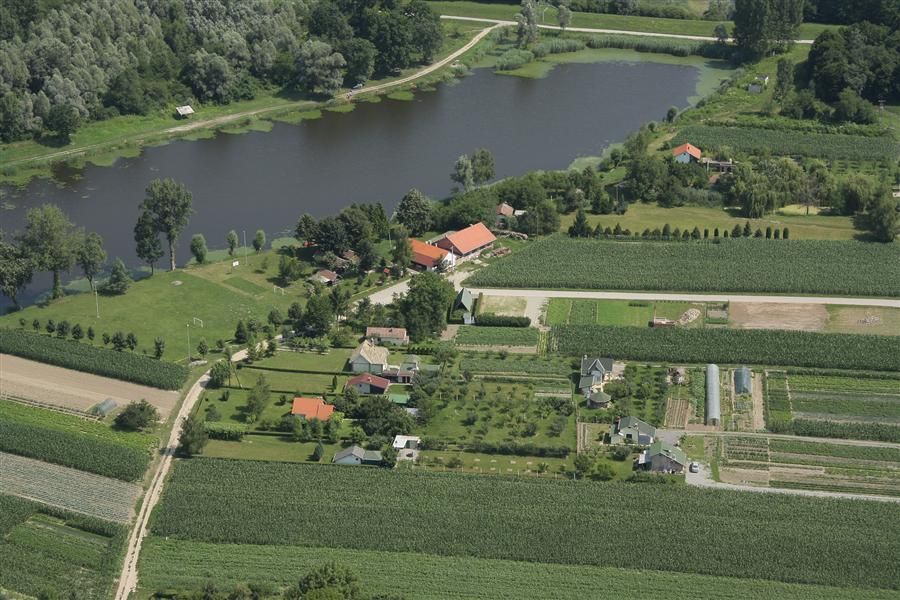 While eastern Croatia contains some of the country's economically weakest areas, many residents of Slavonia have land beside their houses where they grow vegetables, fruits and nuts. Despite this, they are still over-reliant on pork meat © Croatian National Tourist Board
While eastern Croatia contains some of the country's economically weakest areas, many residents of Slavonia have land beside their houses where they grow vegetables, fruits and nuts. Despite this, they are still over-reliant on pork meat © Croatian National Tourist Board
“In the more rural parts of our country, they eat much more seasonal fruits and vegetables,” says Iva. “They eat more vegetables in general – they grow it themselves and eat what they grow. Although, in many rural areas, there is still an over-reliance on meat. Especially the cheapest meat – pork.”
A 2008 study called Regional Differences in Dietary Habits of Adult Croatian Population conducted by researchers at the Andrija Stampar School of Public Health, School of Medicine, University of Zagreb concluded that the people in the poorest areas of Croatia had the poorest diets. Those regions were central Croatia and eastern Croatia (Slavonia).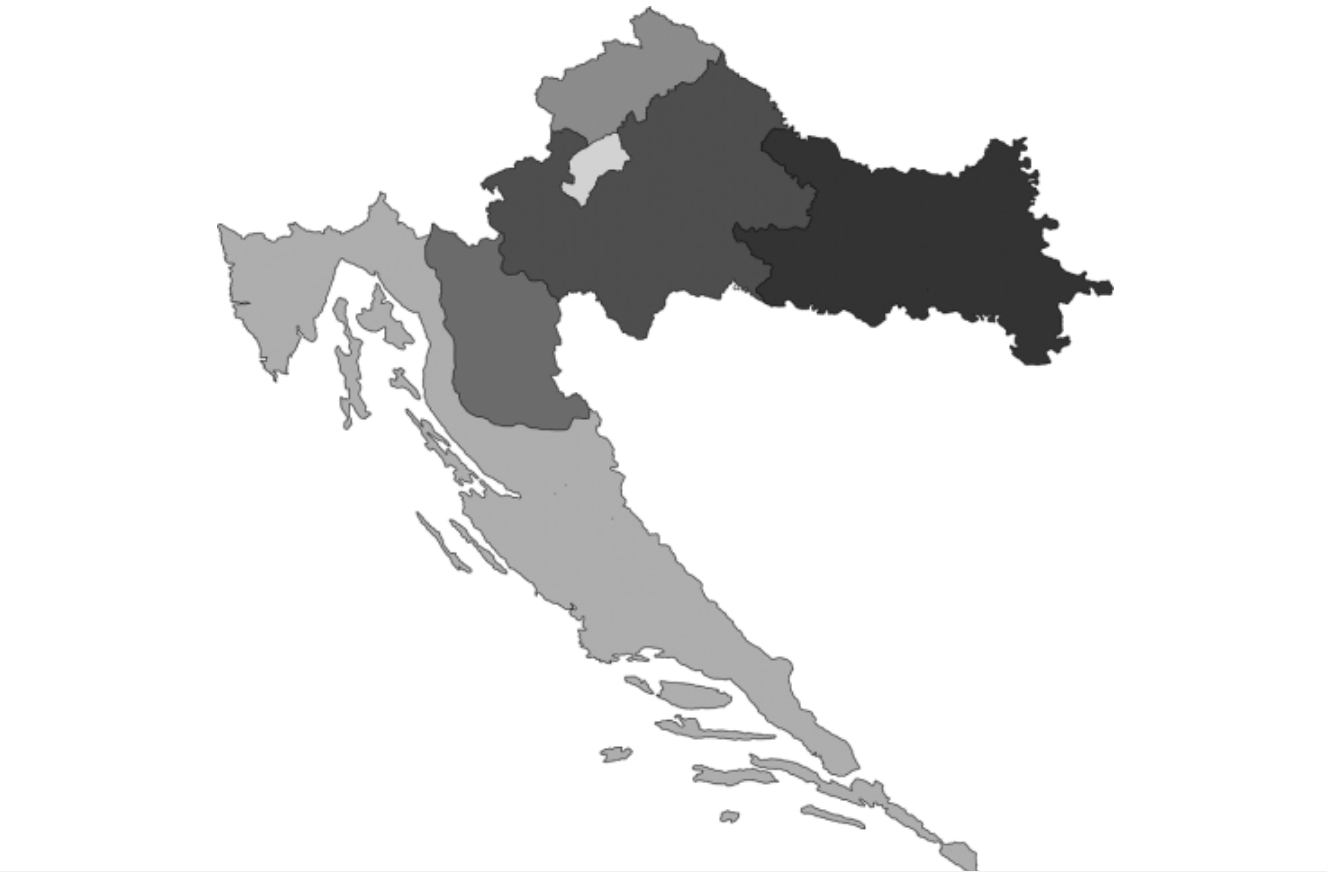 Croatia's food. A map showing the unhealthiest Croatian diets by region, produced for a study undertaken by researchers from the Andrija Stampar School of Public Health, School of Medicine, University of Zagreb. People who live in the poorest regions - central and eastern Croatia - have the least healthy diets. The diet of those who live in Zagreb, which has the country's highest wages, is very good
Croatia's food. A map showing the unhealthiest Croatian diets by region, produced for a study undertaken by researchers from the Andrija Stampar School of Public Health, School of Medicine, University of Zagreb. People who live in the poorest regions - central and eastern Croatia - have the least healthy diets. The diet of those who live in Zagreb, which has the country's highest wages, is very good
In these regions of higher unemployment and lower opportunities, people relied more heavily on a diet of red meat, preserved meats and smoked meats than anywhere else in the country. They also used more butter, pork lard and other kinds of animal fat in food preparation and more salt. While tradition and geographical location do play a part in forming these menus, it is incredibly naive to think that economics is not the key factor – there are river fish available all over Slavonia. This is not simply a question of a healthy Mediterranean diet in comparison to an unhealthy continental one – the City of Zagreb was shown in the study to consume an incredibly healthy diet of Croatia's food. The reason? It may be continental, but it has the highest wages in the country. The Croatian diet is heavily reliant on unhealthy pork meat. Unless you go to a specialist or high-quality outlet, you will find cheap pork meat in almost every mixed/minced meat dish - in cevapi, in lasagne, in bakery snacks, in beefburgers and cheeseburgers (yes, really, they put pork their burgers - sometimes you can even find cheap chicken meat mixed into Croatian burgers. True story) and even in the mixed kebab meat. They preserve pork as the highly prized prsut/prosciutto, in sausages like kobasica and kulen, eat the pig's blood in a sausage called krvavica and fry the pig rind to make a crunchy but hardly healthy snack called cvarci. Croatia also has the best bacon in the world.
The Croatian diet is heavily reliant on unhealthy pork meat. Unless you go to a specialist or high-quality outlet, you will find cheap pork meat in almost every mixed/minced meat dish - in cevapi, in lasagne, in bakery snacks, in beefburgers and cheeseburgers (yes, really, they put pork their burgers - sometimes you can even find cheap chicken meat mixed into Croatian burgers. True story) and even in the mixed kebab meat. They preserve pork as the highly prized prsut/prosciutto, in sausages like kobasica and kulen, eat the pig's blood in a sausage called krvavica and fry the pig rind to make a crunchy but hardly healthy snack called cvarci. Croatia also has the best bacon in the world.
“Sometimes the most difficult obstacle to good health facing those here who really need to change their diet is the cost of Croatia's food,” agrees Iva. “It's easy to say “you must eat more fish, fruit and vegetables”, but it's not always easy to do. Many people simply can't afford it. So, what I try to do in those cases is to look for the cheapest foods available which are still the right options. For example, sardines here are really not so expensive. They are high in Vitamin D and Omega 3, which is very important for cardiovascular health. I also recommend eggs, which are high in Omega 3 fatty acids and Vitamin D. I recommend changing to milk and cheese which have a lower fat content. You can find good food which is not that expensive. You might have to search, but you can find it. I recommend people to go and see what is in the discount section. There are lots of us looking to address these problems. On the Instagram page of different.hr each week they advertise what foods are on discount in every Croatian supermarket. That's a really useful resource. It's also great to grow something of your own. You don't need a huge Slavonian back garden to do it – you can even grow some things just on your balcony.”
Croatian Healthcare Workers: Christmas's Forgotten Heroes?
December 28, 2020 – Amidst the difficulties of a second lockdown, a socially distanced Christmas and yet more earthquakes, have we forgotten about Croatian healthcare workers? TCN decided to interview a doctor working on the front line of the fight against COVID
During the first lockdown, it was all about the balconies. Saxophonists, DJs, opera singers – we were entertained on social media by a string of balcony-based stunts that somehow showed resilience, community spirit, humour. Zagreb was no exception. A trend of clapping on balconies in appreciation of healthcare workers passed from country to country and was picked up in Zagreb. After the applause finished, people went back inside. Nothing much had changed. It was a nice enough gesture.
Since the start of summer, no such applause has been heard. Perhaps the release from lockdown gave the signal that the lives of Croatian healthcare workers had also become much easier? That certainly wasn't the case. Though the number of people infected with COVID has grown significantly over recent weeks, Croatian healthcare workers have been treating people sick with COVID since springtime.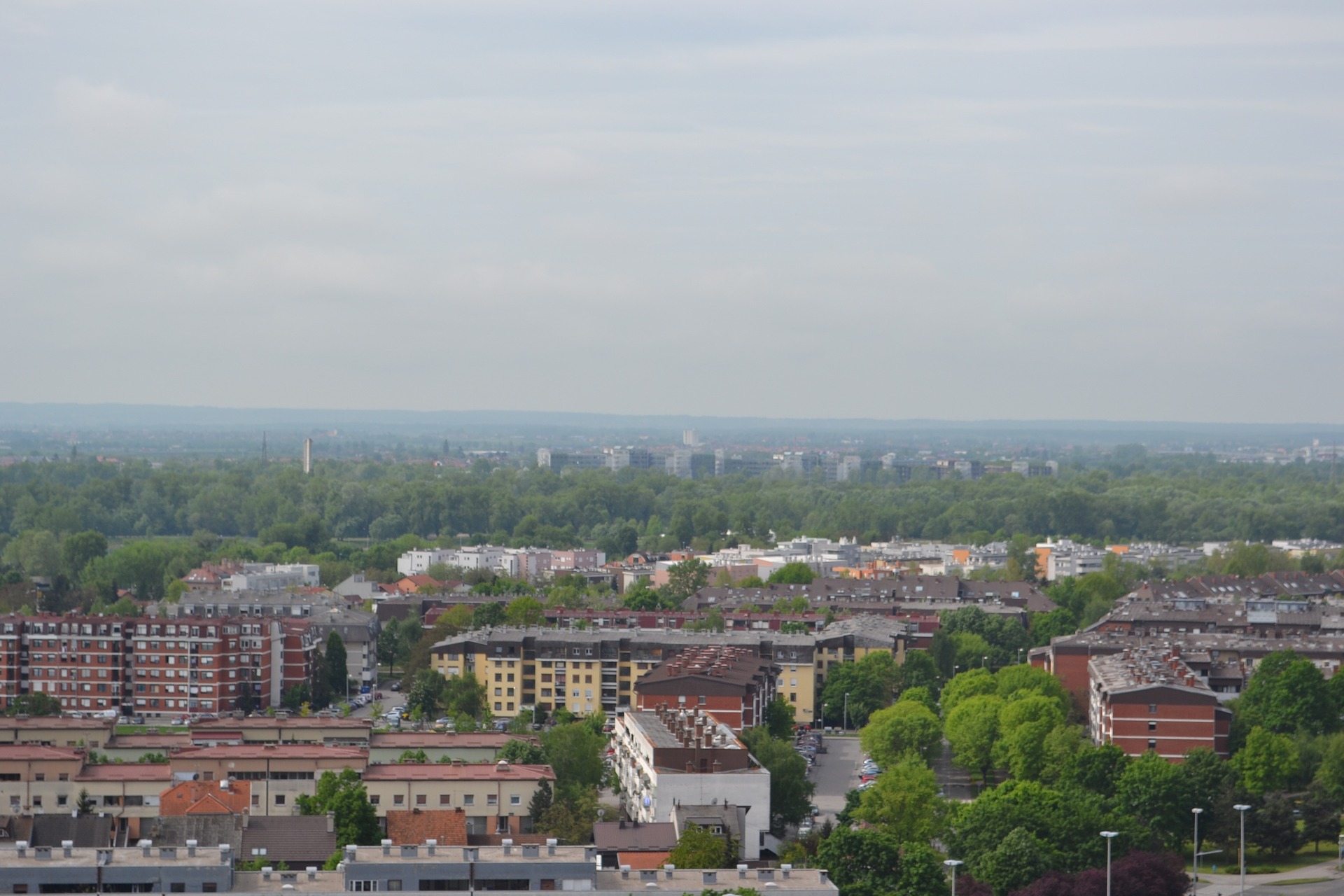
Croatian healthcare workers are currently busier with COVID patients than at any time before. And yet, there are no more trips out onto the balconies to show our appreciation for them. Perhaps it's now too cold outside? Perhaps some aren't aware how busy Croatian healthcare workers currently are with COVID patients? Are we perhaps guilty of taking Croatian healthcare workers for granted? Or, maybe we have simply put Croatian healthcare workers to the back of our minds as we struggle with our own challenges?
Throughout this year, TCN has been pleased to report many instances of generosity and innovation directed towards the fight against COVID. Certainly, not everyone in the country is guilty of forgetting about the Croatian healthcare workers who are on the front line fighting this disease. But, how much impact do these instances have on the general lives of Croatian healthcare workers? What is it like to no longer hear the nightly appreciation from our balconies? And, just what is life like as one of the many Croatian healthcare workers battling COVID in the year of the pandemic? TCN decided to interview one to find out.
The doctor we spoke with is a resident physician, working at a smaller community hospital in the continental part of Croatia. They agreed to speak with us on the condition that they do so anonymously.
Looking back at the first lockdown, we didn't know so much about COVID back then. We didn't know exactly how it was spread, the different manifestations of the disease, what course the disease took, nor what the recovery could be like. I think the government did a really good job of responding to the threat as they saw it. We had a small spike in cases, but that is minuscule to what we have now.
I think people generally did what they were told because they thought it would be temporary and they could see the sense in starving the disease out.
At the hospital, we were at first caught a little off guard with the amount of PPE we had and some other resources that we needed. For ICU and ventilators, we were well equipped.
Some of the residents were given some paid leave. It was important to put human resources into tiers. Croatian healthcare workers were certainly more predisposed to catching the disease, simply because they were around it every day.
After such great early successes, I was surprised that everything was relaxed later on to allow the tourist season to take place how it did, and for events like the Vukovar commemoration. It felt like it was a calculated risk. The lockdown we are now in is perhaps too little, too late. The disease is out there now, wild. The numbers of infected people are significantly higher.
The difficulty with this disease is that people can be infected and have very few or no symptoms at all. They might not know they are spreading the virus. You might not know you're sitting next to someone who has it.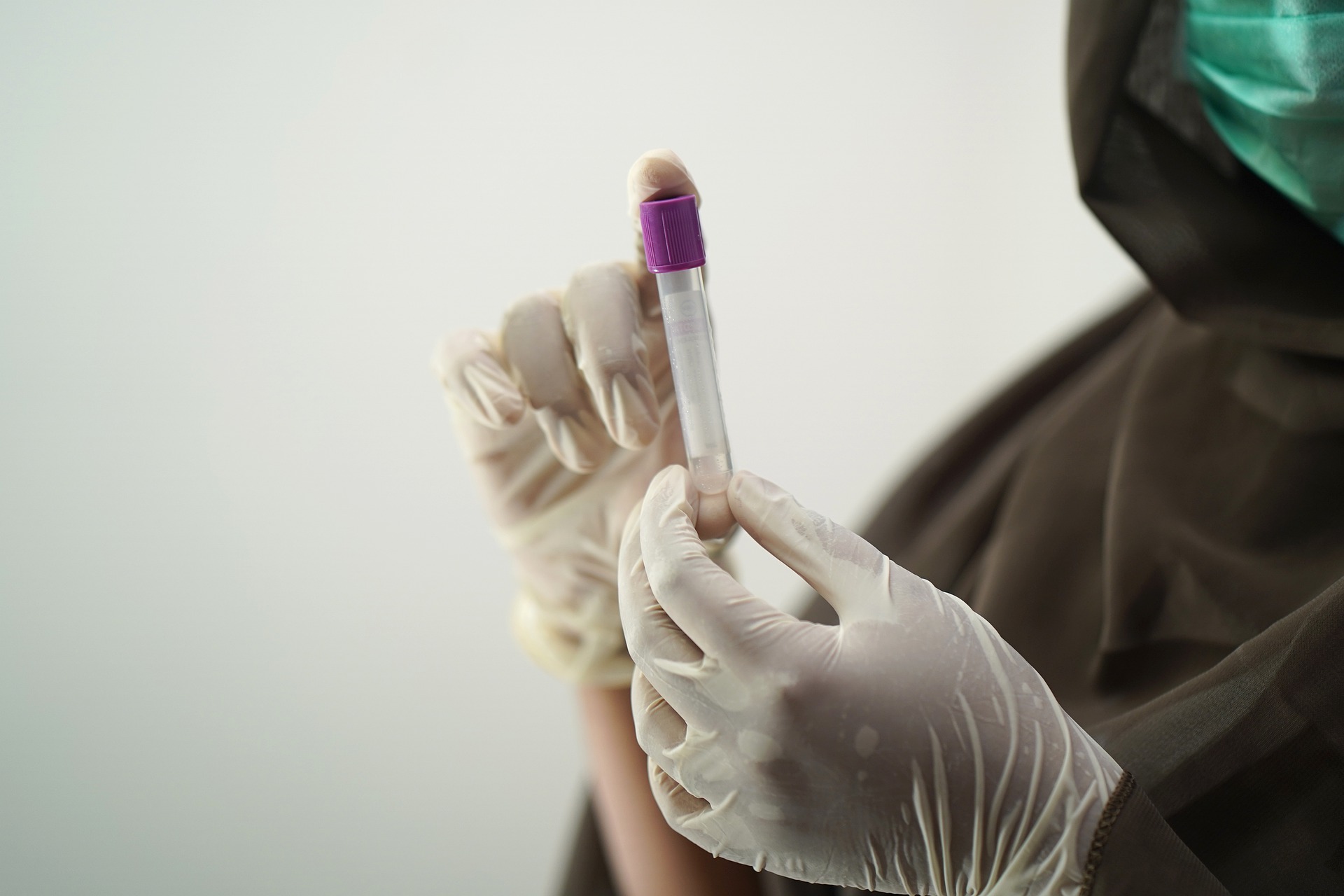
Even though we're not at the centre of care for a major population area or city, we saw cases of the disease almost immediately. Our community hospital services an area containing around 150, 000 people. The first cases in April came from nursing homes – elderly, vulnerable people, many with pre-existing conditions. We were well equipped to handle it. Now, we are stretched on a daily basis. We fill the beds with sick people as soon as we empty them.
We wear masks and PPE all day, all the time. All Croatian healthcare workers in hospitals currently do this. Every patient who comes in, regardless of their symptoms, we treat them as though they are carrying the disease.
A lot of residents like me, who are working towards getting their specialty, go to do some periods of work in larger hospitals in the bigger cities. Now, many of those residents have been called back to their community hospitals – we are short on human resources.
The hospital has had to restructure itself significantly. Lots of doctors have been asked to provide cover in the emergency department. Over half of that area is now fully dedicated to COVID.
What do COVID patients look like in regards to their symptoms? It depends on their age and risk group, but you see people who look like they have flu or bacterial pneumonia, you see people who are in acute respiratory distress. Sometimes they have neurological changes, some of them look like they have had a stroke. Some people who have been infected and have supposedly got over the worst of the symptoms, come back in after a month or two with blood clotting problems – blood clots in the legs, which have a tendency to travel up to the lungs and cause a pulmonary embolism. That's a pretty big medical emergency. Some who have pre-existing heart conditions come in with a heart attack triggered by them catching COVID – it's more complicated trying to revive someone when you know they have COVID. The presentation of the disease is so variable.
It's not only older people. I've seen young people be admitted with serious reactions to COVID - young, healthy people who have no pre-existing conditions. I've seen young people come in with mild symptoms, they are sent home with antibiotics and steroids. That is the standard treatment – antibiotics to prevent a bacterial super-infection and steroids to prevent an acute reaction by the body's immune system to COVID. - that's what can cause big problems later on, in the course of the illness. But, sometimes that's not enough. I had a young patient just last week - super healthy, worked out regularly, no pre-existing conditions – and his lungs just looked awful. He had to go to the ICU immediately (sadly, this patient later died). That's like no disease I've ever seen before. Really, COVID is a completely new kind of animal.
The new strain of COVID? There is evidence that it can be spread more easily, and that it can affect more younger people, but there is no evidence that it is any more severe. The vaccines will work against it.
We're short on ventilators now. Really, we need two free ventilators at any time, in case there is an emergency admission. We are not currently in the position where we always have two free ventilators – sometimes they are all in use. That's a worry. I worked one shift where the anaesthesiologist said “We just don't have any more space for them – we will just have to put them in the hallway”. I've never seen that before.
I've heard of Croatian healthcare workers, colleagues in other hospitals getting sick with COVID and the hospital asks them to prove they got sick at work. It's pretty clear that's the most likely place they would have got sick because they're working with COVID patients. They were forced to be off work, but only on a lower level of sick pay. If you get ill because of being at work, you get full pay. But, they couldn't prove it, so they didn't get that.
I've been lucky – I haven't caught COVID yet. Well, as far as I know. My pay hasn't gone down, it's gone up – but only because I'm working so many double shifts. I volunteer to provide cover when other members of staff get sick. The specialists – the consultant doctors – they have it worse than us resident doctors. They are more responsible, so they are expected to work more hours. Nobody is pressured or threatened into picking up extra shifts, it's just something that almost all of us just do.
I've read some nice stories about fundraising efforts and donations to Croatian healthcare workers and hospitals in different parts of the country. Everything is appreciated. But, I personally haven't seen any effect of that on our day to day lives at work. Not at our hospital. Maybe there were PPE donations or cash donations, but it hasn't impacted the daily lives of me and the Croatian healthcare workers who are my colleagues. I think I heard that a local garage was giving free cups of coffee if you show your medical ID. Every little is appreciated.
For me and the Croatian healthcare workers who are my colleagues, instead of any kind of personal discounts or donations to staff, we would much prefer if people just took this disease more seriously. Things look very different when you work in a hospital compared to someone outside who maybe doesn't know anyone who got sick.
I came off a particularly difficult double shift a couple of months ago – it was just non-stop COVID admissions, some severe cases. As I was walking home, I walked past a bar that's near to the hospital. They had signs on the walls telling people to keep their distance. But, the bar was absolutely packed – full of young people. It just felt so disappointing. I couldn't help but think of the older relatives they would come in contact with, some who might get really sick.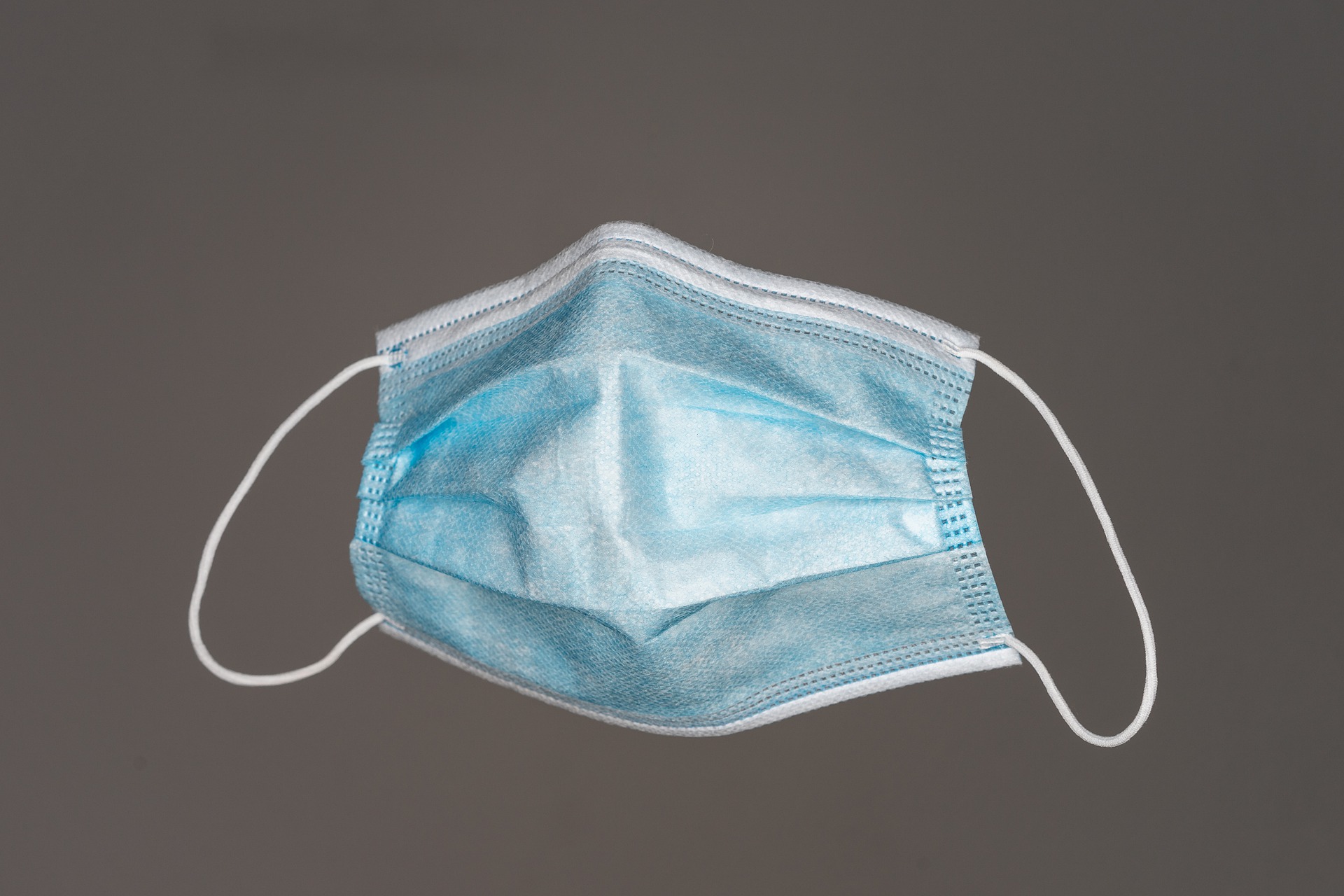
Instead of people clapping on balconies, I think Croatian healthcare workers would just prefer more general vigilance and personal responsibility – wear your mask, wash your hands regularly, no more parties in the basement. Clapping on balconies is a nice gesture, but ultimately it's an empty one.
How does it feel to know that there are some people out there, in every country, all around the world, who believe COVID is a hoax, or a plot, or not so serious, or that the vaccine is dangerous or something other than what it is?
Well, it's not always the content of the conspiracy theory that appeals to these people as much as it is their inability to accept facts – the truth – because they have little faith in the authorities that are telling them this. Here in Croatia, I think that distrust is quite high – a lot of people are disillusioned with the state and politics, because of corruption. Sometimes over 50% of the population choose not to vote. The dissemination of misinformation over social media doesn't help - if that's where people get their news from. If you look at that example from your own country, where strict measures about movement were put in place by your government, and immediately afterward, the Chief Advisor to the Prime Minister, was caught breaking them to travel across the country with his family to a second home in the countryside, going out on day trips. And he was defended by his colleagues after he was found out! When people see those kinds of things happening, the distrust between people and the authorities just grows.
All of the images in this article are used as illustrations only. None of the places or people depicted are in Croatia or Croatian, except for the first image, a panorama of Zagreb
Croatia is one of the Most Safe Countries in 2021 for Visitors
December 4, 2020 – Accepting all known knowledge of the Coronavirus risk and the announced vaccines, security and risk experts International SOS have published their latest, annual Travel Risk Map. It says Croatia is one of the most safe countries in 2021 for visitors
With the end of the life-halting Coronavirus in sight, thanks to several effective vaccines announced, which country would be best to visit next year? Well, Croatia is one of the most safe countries in 2021 for visitors.
It's been a long, difficult year for everyone. It's maybe hard to believe if you live in Croatia and haven't much travelled outside the country, but the residents of Croatia have had it no more difficult than anywhere else. With only around 4 million inhabitants, there's lots of space in Croatia to move around.
Take in comparison Britain's London. That one city (1,572 km²) alone has 9 million people. Croatia has 56,594 km² for less than half the number of people. But, this generous amount of space in which to move around is not the only reason Croatia is one of the most safe countries in 2021 for visitors.
On 2 December 2020, Total Croatia News published the annual report based on the Global Terrorism Index, identifying Croatia is one of the most safe countries in 2021 in regards to the absence of terrorist threat and effect. Now, according to the latest annual Travel Risk Map, it has been designated that Croatia is one of the most safe countries in 2021 for visitors.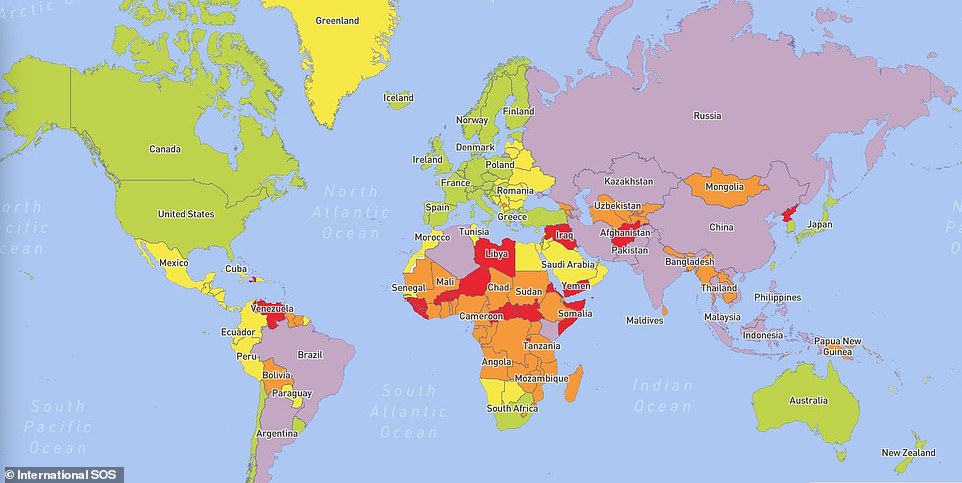 Security and risk experts International SOS's Travel Risk Map for 2021.
Security and risk experts International SOS's Travel Risk Map for 2021.
The map, created by security and risk experts International SOS , ranks the safety of countries across the globe taking into account medical, security and road risks. It assesses the risk of political violence, social unrest, and the threat of violent and petty crimes – and, most importantly this year, the impact of the pandemic.
For the first two categories, countries are given a rating out of five, while road safety is rated out of four based on the mortality rate per 100,000 people. The places with the highest risk level for security issues are mostly in Africa, with South Sudan, Mali, Yemen, Somalia and the Maiduguri region of Nigeria listed under the most dangerous, along with the Donetsk and Luhansk regions of the Ukraine.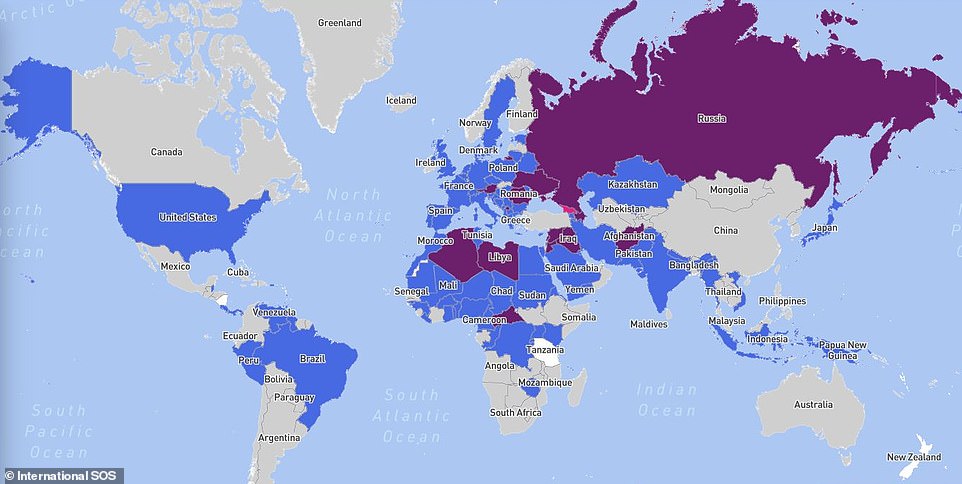 International SOS's map showing the countries with the most and least Covid-19 disruption. Very low-risk countries are marked in white, low risk in grey, medium in blue, high in purple and very high in pink.
International SOS's map showing the countries with the most and least Covid-19 disruption. Very low-risk countries are marked in white, low risk in grey, medium in blue, high in purple and very high in pink.
Very few countries rank above Croatia in the new safety map, New Zealand, Tanzania and Nicaragua among them, meaning Croatia is one of the most safe countries in 2021 for visitors.
For the residents of crowded cities elsewhere in Europe, Australia or the USA who have felt more than restricted in 2020, it might be worth remembering when planning next year's escape that Croatia is one of the most safe countries in 2021 for visitors.
Chinese Tourists From Coronavirus Epicenter Wuhan City Arrive in Croatia
A bus of Chinese tourists from Wuhan, the Chinese city where the Coronavirus epidemic was first detected, recently arrived in Croatia. Just before noon yesterday, the bus reached the border crossing at Bregana.
*Follow this page for updates from Total Croatia News on the coronavirus in Croatia. Contact numbers for epidemiologists, travel advisories and measures for preventing the spread of the coronavirus can be found here.
According to reports, they arrived in Europe by plane to Milan, and arrived by bus to Croatia. Before their arrival in Croatia they were screened for signs of the virus at Milan airport. No one showed symptoms of the disease, as reported by Index on January 25,2020.
Chinese Tourist Bus Driver Advised by Croatian Epidemiologists
They stopped at Bregana and were instructed what to do if they notice symptoms. As Index learned, the bus driver also received the phone number of epidemiologists and must contact them if any passengers show any symptoms of the Coronavirus.
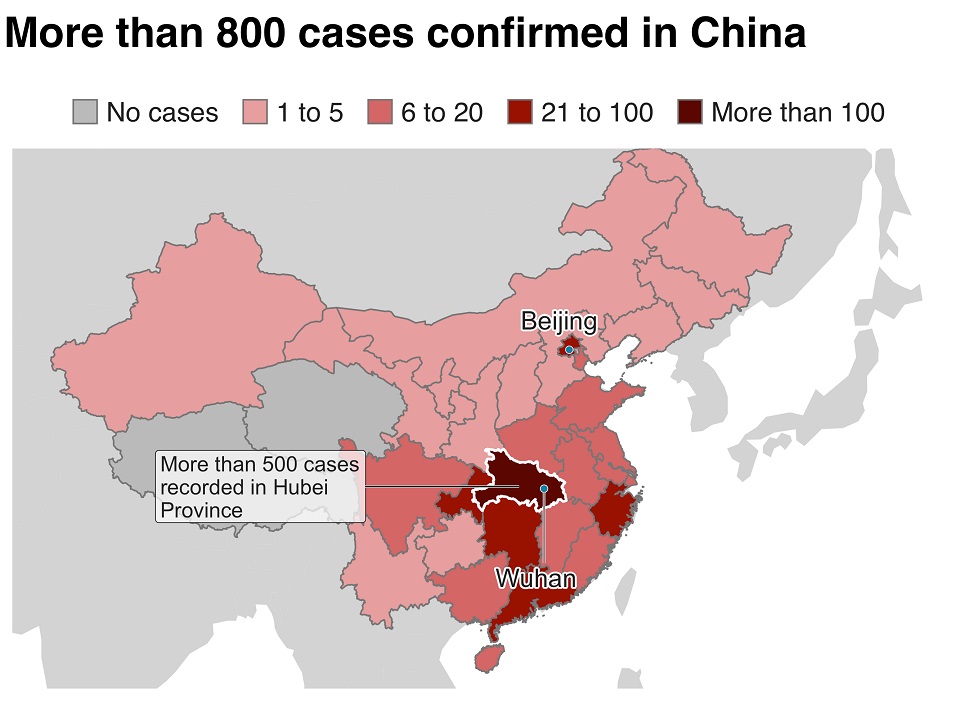
Croatian Institute of Public Health Issues Travel Advice for China
The Croatian Institute of Public Health was informed of the event and had previously issued precautions for travelers going to China and returnees or tourists from China, as reported by Iva Tatić/Total Croatia News on January 25, 2020. Those precautions follow below:
In view of the emergence of a new Coronavirus in China and the unknown about transmission routes, HZJZ advises international travelers traveling to affected areas to follow the usual precautions advised to reduce the risk of other travel-related diseases (i.e. alimentary infections which are transmitted by fecal-oral means or insufficiently processed foods, respiratory infections transmitted by aerosols and droplets, sexually transmitted diseases transmitted by unprotected sexual contact, blood-transmitted diseases transmitted by the sharing of drug and drug injection supplies).
- Avoiding close contact with people who have an acute respiratory infection.
- Frequent hand washing, especially after direct contact with people who are ill or while in their surroundings. If contact with an affected person cannot be avoided, use a surgical mask to cover your mouth and nose, do not touch your eyes, mouth of nose after contact with the patient. And mandatory washing and disinfection of hands after contact with the patient.
- Avoiding close contact with live or dead animals: both domestic and wild animals.
- Consuming properly processed foods, preferably immediately after preparation; thorough peeling of fruits and vegetables, drinking bottled water without ice.
- Avoidance of unprotected sexual intercourse with persons whose health status is unknown.
- Avoiding the sharing of drug paraphernalia (or illicit drugs) with others.
Health Precautions for Travel Returnees
Measures to reduce the spread of the disease on and upon return from the affected area:
- Passengers who have symptoms of acute respiratory infection should cover their nose and mouth with disposable wipes and wash their hands when coughing and sneezing.
- If an international traveler becomes ill, he/she is advised not to travel during the illness for several reasons: The demands of the journey may worsen his/her health. In some countries a passenger will not be allowed to board a means of transport (airplane, ship, train, bus) if he/she is recognized to be ill due to the possibility of transmitting the infection to other passengers.
- If the passenger becomes ill while traveling in a vehicle in international traffic, they should report their symptoms of the disease to staff to ensure that the patient remains comfortable and has the necessary protective equipment (surgical mask), medication (antipyretic, analgesic), and so that arrangements can be made for the patient with be met at the destination by the local health service.
- If a passenger develops fever and/or coughing and breathing difficulties within 14 days of leaving the affected area (at this time, Wuhan City is considered the only affected area), the doctor should be informed and informed that he/she has stayed in Wuhan for (or other affected area, if identified).
"The reason for promptly reporting a passenger with a fever with respiratory symptoms to a physician is to permit timely diagnosis and determine the true cause of the disease. It is much more likely that the returning traveler has the flu or other respiratory illness than the disease caused by the new Coronavirus. It also enables timely initiation of the proper treatment, prevention of further transmission of the disease to persons in close contact and ensures the necessary monitoring of the health persons who have been in close contact with the patient.
A returnee from the affected area may announce his/her arrival by telephone to the doctor to avoid staying in the waiting room and to arrange a way of arrival (it is not advisable for the patient to travel by public transport). If he/she does not know who to contact, the person may call the local epidemiologist or the epidemiologist of the Croatian Institute of Public Health for advice," the HZJZ advised.
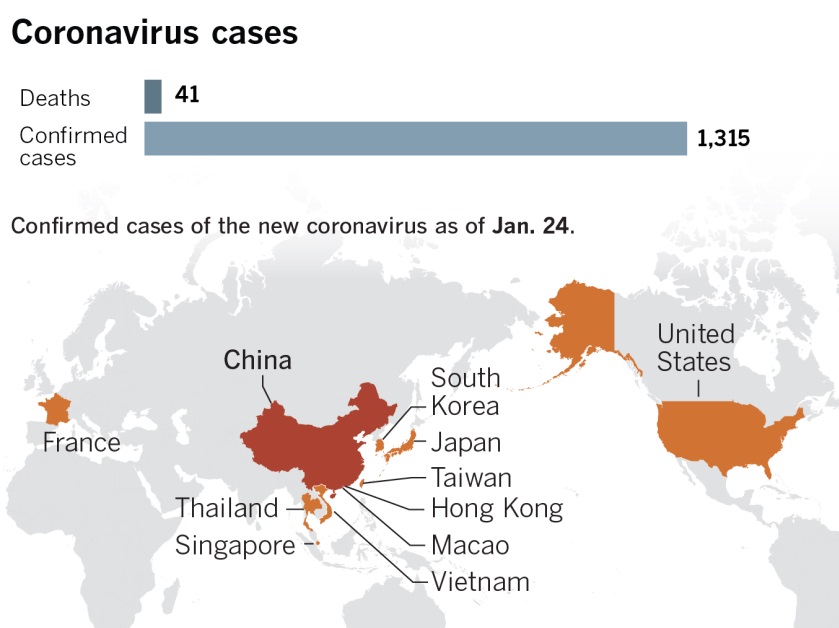
What have scientists discovered about the Coronavirus so far?
The new Coronavirus has taken scientists by surprise according to Index on January 26, 2020. They do not know exactly where it originated, but it has already traveled 9500 kilometers since being discovered in China at the end of December. Despite quarantines, the epidemic is spreading. The number of fatalities is on the rise too.
If this was a Hollywood movie, now would be the time to panic. However, most people just need to wash their hands and continue going about their daily lives.
"Don't panic if you're not paid to panic," says epidemiologist Brandon Brown of the University of California, who has studied many deadly epidemics. "Health professionals need to be on standby and governments need to provide them with resources. Timely and accurate publicity is the key, and everyone else can relax," Brown adds.
Within three weeks of the outbreak, which spread to at least 941 people in 11 countries, scientists learned more about the virus. It is a Coronavirus, a relative of the pathogen causing Severe Acute Respiratory Syndrome (SARS) and Middle Eastern Respiratory Syndrome (MERS), a disease that has caused hundreds of deaths worldwide.
Other Coronaviruses cause nothing more severe than a cold. In addition to humans, Coronaviruses can infect cows, pigs, cats, chickens, camels, bats and other animals. Most of the initial victims of the current epidemic reported they had visited a large '' live market '' in the Chinese city of Wuhan, suggesting that the virus had passed from a different species to humans.
Coronavirus Causes Only Mild Symptoms in Young and Healthy
When experts examined the genetic code, they found a sequence previously unknown to science. This means that humans have not been able to develop natural immunity to the Coronavirus called n-CoV2019. Fortunately, it seems to only cause mild symptoms in young and healthy people. Most of the reported deaths are occurring in people over 50, those who have been previously ill or have weakened immune systems. "So far, we have no evidence that this is more dangerous than the flu. Most people will be fine with decent medical care," reports Michael Mina, an epidemiologist at Harvard.
"In fact, it is possible that hundreds or thousands of people have already been infected in China and elsewhere but have experienced such mild symptoms that no one has noticed," adds Tom Inglesby, director of the Johns Hopkins School of Public Health. "It's too early to know. In new outbreaks; the most severe cases are often identified first and can result in a distorted picture of how dangerous the situation is," Inglesby points out.
Information Updates Spreading Faster Than Coronavirus
Epidemiologists are now trying to find out when the new Coronavirus acquired the ability to transmit from person to person since the public market in Wuhan, which is considered the starting point, is clearly no longer the source of the epidemic's spread. Health workers expect human-to-human spread to continue in the short term, which means new cases will emerge across Asia, in the US and possibly in Europe. The news is that information about the virus is spreading faster than a virus.
The SARS epidemic erupted in 2002 in the Chinese province of Guangdong and by the time of its suppression in 2003; it had killed 774 people in 29 countries. The registered number of patients exceeded eight thousand. However, at the beginning of the crisis, the Chinese government was falsifying the number of sick people, refusing assistance from abroad, which undermined the ability of their own citizens to protect themselves. The public outrage led to the resignation of the Chinese Health Minister.
This time it's different. Chinese authorities quickly informed other countries of the epidemic's development. They also shared the genetic sequence of the virus, which can help epidemiologists track its spread and predict what to do next.
"This is definitely not 2003. The speed at which the virus was identified is a testament to that," adds Michael Mina from Harvard.
Scientists Develop Diagnostic Test Within 24 Hours
After receiving the Coronavirus genome, it took scientists 24 hours to develop a diagnostic test.This fact further supports the argument to avoid panic. The rapid increase in the number of patients can be misleading. Before the diagnostic test was developed, doctors had no reliable way of distinguishing n-CoV2019 virus infection from the virus causing pneumonia. And that means the number of registered cases will now skyrocket.
"You may hear about 300 new cases, but maybe 300 were before. An increase in the number of patients may not mean spreading the virus, but better detection," she added.
Follow our Lifestyle page for updates on the spread of Coronavirus and recommended protective measures for Croatia and abroad.
*Follow this page for updates from Total Croatia News on the coronavirus in Croatia. Contact numbers for epidemiologists, travel advisories and measures for preventing the spread of the coronavirus can be found here.
What is Croatia Doing to Prevent the Spreading of the New Coronavirus?
January the 25th, 2020 - As soon as news of the potential epidemic spread of the new coronavirus broke in the international media, the Croatian public also started worrying about the deadly virus and started asking what has been done to prevent the spreading of the disease into Croatia.
DAILY UPDATES: Total Croatia News provides LIVE daily updates on the coronavirus epidemic here.
There is no clear answer to that question.
As soon as the situation on the international scale became clear, warnings that there's an increased probability of the virus coming into Croatia because of the number of Chinese workers working on Pelješac bridge surfaced, and that lead to Croatian journalists and columnists examining the imminent danger to the Croats and the state's health system. While it's not entirely clear how worried we should be about the emerging threat (with numerous scientists and publications saying that the mortality rate for the patients suffering from the coronavirus-caused pneumonia is significantly lower worldwide than the mortality rate related to seasonal flu, which nobody is really worried about), some of the institutions in Croatia have reacted to the potential threat.
The Croatian Ministry of Health has published their very brief set of recommendations (opens a .doc file in Croatian) for the travellers to and from China, and the Croatian Institute of Public Health has published their overview of the situation.
The Ministry warns those travelling to China to avoid sick persons, to avoid animals (both living and dead) as well as markets, not to eat any raw or semi-cooked animals, to wash their hands often (!) and to notify their doctor of their plans to travel to China.
For the travellers returning from the regions of China where coronavirus has been confirmed, and if you have a fever, cough or have trouble breathing, they want you to seek medical attention (but call before coming to your medical professional to inform them you've been to China), not to travel while sick, to avoid contact with other people, to cover your mouth with a handkerchief while coughing or sneezing and to wash your hands often (!).
The Croatian Institute of Public Health (HZJZ) has published a more comprehensive review of the situation, explaining more about the disease and its spread in the population. Their recommendations for the travellers to and from China (especially the Wuhan region) are similar, although they do provide the list of the epidemiologists on call to assist with any questions and worries.
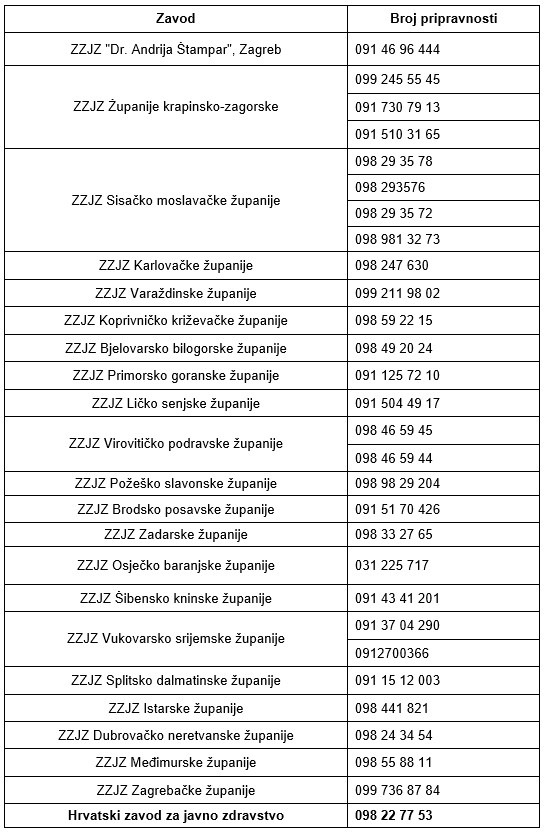
At the same time, the Croatian Ministry of Foreign and European Affairs allegedly informed the public, and subsequently it was reported by the Croatian media, that four Croatian citizens are believed to be in the Wuhan region: three of them working there, and one visiting. All of them are reported to be healthy, but the Ministry doesn't recommend travel to certain Chinese regions (it hasn't been fully specified which) because of the dangers of the infection.
So far, the active measures of protection against the virus at the Croatian airports have not been introduced.
That means that people arriving to Croatia will not have their temperatures taken in order to determine which of them have a high temperature. The airports in Croatia are prepared, though, going through the passive measures and being vigilant, especially as we know that there are a number of managers working on Pelješac bridge expected to return to Croatia after having celebrated the Lunar New Year in China.
DAILY UPDATES: Total Croatia News provides LIVE daily updates on the coronavirus epidemic here.
Are Mali Ston's Precious Oysters Now Norovirus Free?
We reported recently on the truly tragic situation that Ston's precious oysters had found themselves stuck in. In short, this famed gem of southern Dalmatian cuisine had fallen victim to Norovirus after septic tanks weren't being cleaned out properly, and the traditional Days of Mali Ston Oysters, which was due to be held on the 16th of this month, had to be cancelled for health and safety reasons.
While the news was indeed as sad as it was alarming, has a solution to Mali Ston's Norovirus problem been found?
As Morski writes on the 11th of March, 2019, there appears to no longer be any detected presence of the potentially deadly Norovirus in Mali Ston. This was confirmed to Dubrovacki list by dr. Sc. Eddy Listeš from the Veterinary Institute of Split.
The last tests on the matter were carried out last Friday, but unfortunately the paperwork confirming the absence of Norovirus from the area and its beloved oysters has not yet reached those to whom such a document of confirmation is of vital importance.
To briefly recall, back at the very beginning of March, discovered via the regular sampling of the seawater and shellfish (oyster) quality, the presence of Norovirus was established.
Norovirus, otherwise of human origin, is the cause of infections of the digestive system. Norovirus wreaks havoc in the human digestive system, causing violent diarrhoea, vomiting, the inability to hold any food or liquid down, often resulting in dehydration and the need for emergency hospital treatment, and sometimes even in death. It is transmitted from person to person, via the fecal-oral route, typically through food contaminated by the fecal matter of infected persons and contact with surfaces contaminated with Norovirus. Norovirus is highly contagious and its symptoms, which as described above are often severe, tend to manifest quickly.
Having the potentially massive health issues that could be caused by the consumption of Mali Ston oysters which have come into contact with Norovirus in mind, a decision was made by the organiser of the traditional Day of Mali Ston Oysters to cancel the beloved event, writes Dubrovacki list.
Vlado Onofri, a respected senior scientific advisor at the University of Dubrovnik said that septic tanks, which in themselves would not be problematic were the situaton involving just several family houses, were the cause of the Norovirus issue. The situation that has arisen in the Dubrovnik area as a whole is that there are now a lot of apartments and far too many people, without anyone properly dealing with the septic tanks and the dangerous bacteria and viruses that gather there.
"Septic tanks can't withstand that pressure and it (everything that builds up in them) has to come out somwhere. That's it. We've sh*t on ourselves,'' stated Onofri.
Make sure to follow our dedicated lifestyle page for more. If it's just Dubrovnik and southern Dalmatia you're interested in, give Total Dubrovnik a follow.
12 Million Kuna Investment for Rovinj Hospital in Next 15 Months
As Novac/Barbara Ban writes on the 26th of February, 2019, ''Dr. Martin Horvat'' Rovinj Hospital has proudly stated the fact that in 2019, it plans to invest heavily in the amount of 12 million kuna, and it ended 2018 in a surplus in regard to finance and the number of patients. They claimed that they had 500 patients more than one year earlier, that they provided 16,440 more medical services than they did last year, marking an increase of 26.5 percent.
Rovinj Hospital finished of the business year of 2018 with a financial gain of 623,000 kuna. This is the fifth year in a row that Rovinj Hospital has managed to conclude with some excellent financial results, with all of our employees being paid all of their salaries within the deadline, as well as regressions, Christmas bonuses, vouchers, jubilee awards, money for children for St. Nicholas, retirement benefits, sickness benefits, and assistance in accordance with our underlying collective agreement. I'm proud to show this positive change and an increase in the number of visits to our institution from year to year because better implementation means better addressing the needs of our citizens,'' says dr. sc. Marinko Rade, who was recently elected to the Working Group of the Ministry of Health for the drafting of the Ordinance on Health Tourism.
Investments of 12 million kuna are planned to be carried out over the next fifteen months, and alterations have already begun in the department where the patients from the AUVA insurance company stay during their time at Rovinj Hospital. The hospital's entire roof will be changed, the façade will be renewed, and works on the hospital's energy sources will be carried out, a new elevator will also be installed. The total value of these investments currently stands at five million kuna, with renovation of the main building also planned.
''Investments for a further seven million kuna will be issued shortly, including the renovation of the façade, the replacement of the entire roof, and works regarding the change of the energy [system] of the main building of the hospital, where there are clinics and departments in which our local patients are treated. We're investing the most in these departments. Reconstruction should start at the end of 2019,'' added Rade.
He added that so far, everything they invested has been covered by money from the hospital's significant profits, and now they are financially secure enough to safely borrow. In addition to all of the works Rovinj Hospital is set to undergo, a library will be opened soon in the department, and a new therapeutic park will be set up.
''So far, we've collected 6,000 books donated by citizens, which is a truly impressive and record-breaking number for a public action. At this time, we're separate the books by their categories and languages, and we're renewing the space where the library will be located at the department. Additionally, the placement of a therapeutic park is ongoing, which is being carried out within the Design/Build project in collaboration with the George Washington University from the USA. The project will be completed by April this year,'' noted Rade.
Rovinj Hospital isn't ''only'' planning to invest in buildings, but also in their much appreciated employees, in terms of their continued and additional education. This will amount to up to 250,000 kuna.
''This is the money that this institution allocates from its income, ie, from the income generated from the private market,'' Rade added that owing to several factors, Rovinj Hospital can't raise anyone's salary regardless of their position, and that's why the hospital's administration has been looking for more innovative ways to properly reward and thus hopefully retain such valued employees, and one way is to pay them in continued, additional education.
''Of course, doctors and healthcare staff are paid for their training and for congresses in order to become superior in their specialties, which means more access to patients. But we're also investing in the non-medical staff who work in our hospital, which I consider to be equally important links in the chain. This means that, let's say, chefs and cooks can receive paid education which then allows them to progress and provides them with technical education and training that can help them out more in their day-to-day work. That's why we've reserved a lot of money,'' concluded the director of Rovinj Hospital.
For more on investment in Croatia, healthcare, health tourism in Croatia and much, much more, give our business page a follow.
Click here for the original article by Barbara Ban for Novac/Jutarnji
More People Use Croatian Health System Than Actually Live in Croatia?
As Croatia's increasingly alarming negative demographic trend tightens its grip over the country and its economy, there seems to be more people insured by the Croatian health system (HZZO) than actually live and work here...
As Index/Marko Repecki writes on the 26th of February, 2019, due to the negative demographic trends and a fairly low birth rate, Croatia has now worryingly fallen below four million residents, according to the estimates of demographers, but at the same time, there are miraculously 4,145,169 persons who have Croatian Health Insurance from HZZO.
This means that more people are apparently entitled to Croatian health insurance than are actually really living in Croatia. This phenomenon is not entirely new, because when we look at some of the data for the previous years, it can be seen that there are approximately between 90 and 120 thousand people who seem to be insured with HZZO, therefore using the services of the Croatian health system, than actually live here.
Who exactly are these people who have HZZO health insurance and don't live in Croatia?
Index readily asked HZZO to explain just how this difference of Croatian health system users came about, and they answered that there are persons who are still considered as insured persons in Croatia, although they don't actually live here.
"On the 31st of January, 2019. 4,145,169 insured persons were registered in the Croatian Health Insurance Institute (HZZO). Please note that in some cases the person is still considered to be an insured person, even though they don't live Croatia. As an example, we include: active Croatian insured persons with residence in another EU member state (such as an actively insured Croat who lives in Slovenia), beneficiaries of Croatian pensions who have moved to the territory of another [EU] member state, and our delegates doing temporary work in another member state (a worker whom a Croatian employer sent for temporary employment in, for example, Germany). In all these cases, it regards persons who remain insured persons of HZZO, but they also enjoy the right to health care in the territory of other member states, in accordance with EU regulations on the coordination of the social security system,'' HZZO's statement said.
Index also sought further clarification on who is actually considered an actively insured person, and they got the following answer:
"An active insured is a person who is employed and pays contributions for compulsory health insurance, which are paid by their employer. Such insured persons do not pay health insurance contributions in the country where they live, but their contributions are paid in the country where they work. A person can't be insured in two EU member states, but is insured in the country in which they work, and in the territory of the other [member] state in which they're living, they have the right to full healthcare, just like all of the other persons with health insurance in that [member] state, on the basis of having health insurance in their country of work. For example, an actively insured person works in Croatia and lives in Slovenia, he is then entitled to full health care on the territory of Slovenia, at the expense of the Croatian Health Insurance Institute,'' HZZO replied.
The head of the Lipa Association (Udruga Lipa): "We pay 23 billion kuna every year for healthcare, and the system is breaking down"
145,000 people seems a huge number if we're talking about people who live abroad, yet work in Croatia, or are retirees with a Croatian pension yet live in another EU member state. Index asked the Lipa Association for a comment:
''We at the Lipa Association don't know why HZZO has a higher number of insured persons than the population of Croatia according to DZS and to demographers,'' said Lipa's Zoran Löw, but he referred generally to the catastrophic state of healthcare. Although Croatian workers to pay out a sum of money for access to state healthcare, the Croatian Health Insurance Institute, Croatia's chief health system funder, spends around 23 billion kuna annually, in five years, that comes to a huge amount of 115 billion kuna. We're witnessing the complete disintegration of the system where people literally die on roads, and examinations are being waited for for months, and in some cases, for years.
Löw added that they forwarded an open letter to Milan Kujundžić, the Croatian Health Minister back in 2017, warning of the need to include private institutions in the state's health system.
"In many EU countries, private institutions providing health services are integrated into the system so that they compete equally for jobs funded from the public system. Let's just list some: the Netherlands, Sweden, Portugal, Germany... And this is not just about simpler institutions such as labs or family medicine, the're also serious clinics. In this way, it introduces some healthy market competition and the whole system becomes more agile and financially viable. Unfortunately, in Croatia, this approach is viewed as the privatisation of the healthcare system. This government and its health minister obviously don't have the courage to come out with such an initiative and stand behind it,'' they stated from Lipa.
Make sure to stay up to date with news on the Croatian health system and much, much more by following our dedicated lifestyle page.
Click here for the original article by Marko Repecki on Index.hr


